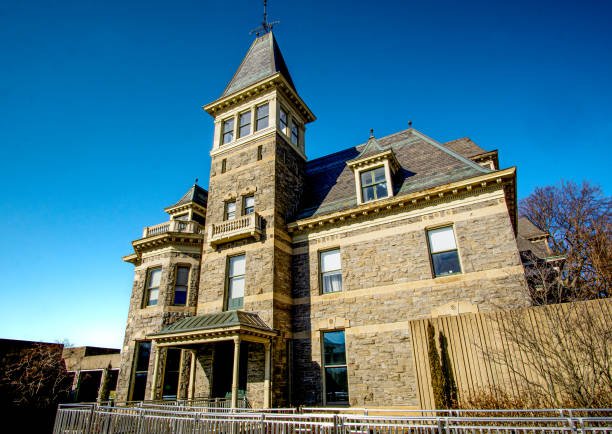The Hudson River School: Pioneering American Landscape Art
The Hudson River School is widely recognized as the first native school of painting in the United States, revolutionizing how Americans viewed their natural surroundings. Founded in the early 19th century, this art movement marked a turning point in American art by celebrating the grandeur and untouched beauty of the American landscape. With a focus on naturalistic and romantic representations, Hudson River School artists paved the way for American landscape painting, setting the stage for future artists to explore the rich and diverse terrains of North America.
Origins of the Hudson River School
The Hudson River School was not a formal institution but rather a loosely connected group of artists who shared a common vision. The movement began in the 1820s, largely spearheaded by Thomas Cole, who is often regarded as the father of the Hudson River School. Cole’s journey from England to the United States led him to discover the majestic landscapes of the Hudson River Valley, a region that would inspire his early work and serve as the namesake for the movement.
Cole’s paintings, which depicted sweeping vistas, rugged mountains, and serene rivers, were more than just pretty pictures; they were a celebration of the American wilderness at a time when industrialization was rapidly changing the landscape. His works captured a sense of awe and reverence for nature, often highlighting the contrast between the pristine wilderness and the encroaching presence of human development.
The Artistic Philosophy: Romanticism Meets Realism
Hudson River School artists were heavily influenced by the European Romantic movement, which emphasized the sublime power of nature and humanity’s small place within it. However, unlike their European counterparts, who often painted idealized or imaginary scenes, Hudson River School artists focused on the real American landscape. They sought to depict the wilderness as it truly was—vast, unspoiled, and breathtakingly beautiful.
This blend of Romanticism and realism defined the Hudson River School’s unique style. Artists like Cole, Asher B. Durand, and Frederic Edwin Church painted scenes with meticulous attention to detail, capturing the play of light on water, the texture of leaves, and the grandeur of mountain ranges. Through their work, these artists elevated landscape painting from a mere background element in portraiture to a respected genre in its own right.
Capturing the Beauty of Untouched Wilderness
One of the defining characteristics of the Hudson River School was its celebration of America’s natural landscapes, which were largely untouched by human hands. In the early 19th century, the United States was still expanding westward, and the artists of the Hudson River School were among the first to document these vast, uncharted territories.
Frederic Edwin Church, a student of Thomas Cole, became famous for his epic, large-scale landscapes that often depicted dramatic weather, stunning light effects, and exotic locations, from the Andes to the Arctic. Church’s work exemplified the Hudson River School’s fascination with the sublime—those moments in nature that inspire awe and wonder. His painting “Niagara” is a prime example, capturing the raw power and majesty of the famous waterfall in a way that was both realistic and emotionally stirring.
Another notable figure, Asher B. Durand, was celebrated for his serene and contemplative scenes that often featured peaceful rivers and tranquil forests. Durand’s paintings, such as “Kindred Spirits,” not only showcased the beauty of the American wilderness but also reflected a deeper philosophical connection between humans and nature. He emphasized the spiritual aspects of the natural world, encouraging viewers to explore Hudson River School paintings as a means to reconnect with the environment around them.
A Response to Industrialization and Urbanization
The rise of the Hudson River School coincided with the Industrial Revolution, a period marked by rapid urbanization, deforestation, and the transformation of rural landscapes. For many Americans, the paintings of the Hudson River School offered a nostalgic glimpse of an idealized wilderness, free from the encroachments of factories, railroads, and cities. KACMUN
Artists of the Hudson River School often included subtle commentary on the impact of industrialization in their work. In some paintings, small human figures or signs of development, such as boats or buildings, were deliberately dwarfed by the surrounding natural landscape, emphasizing the dominance of nature over human endeavors. This juxtaposition served as a reminder of the transient nature of human achievements compared to the timeless grandeur of the wilderness.
Legacy and Influence
The Hudson River School’s emphasis on landscape painting was revolutionary at a time when American art was still heavily influenced by European traditions. By celebrating the American landscape, these artists helped shape a national identity rooted in the idea of the United States as a land of vast, unspoiled beauty. Their work inspired subsequent generations of artists and laid the groundwork for the American conservation movement, influencing figures like John Muir and the establishment of national parks.
The movement’s influence can still be seen today, as contemporary artists continue to draw inspiration from the natural world and the Hudson River School’s commitment to capturing its beauty. For art enthusiasts, visiting galleries or exhibitions to explore Hudson River School paintings provides an opportunity to witness the awe-inspiring landscapes that defined 19th-century American art.
Conclusion
The Hudson River School represents a pivotal moment in American art history, marking the emergence of a distinctly American approach to landscape painting. Through their romantic yet realistic depictions of the untouched wilderness, Hudson River School artists not only captured the beauty of nature but also conveyed a deeper message about the importance of preserving these natural spaces. As viewers continue to explore Hudson River School paintings, the movement’s legacy lives on, reminding us of the profound connection between art, nature, and the American spirit.







